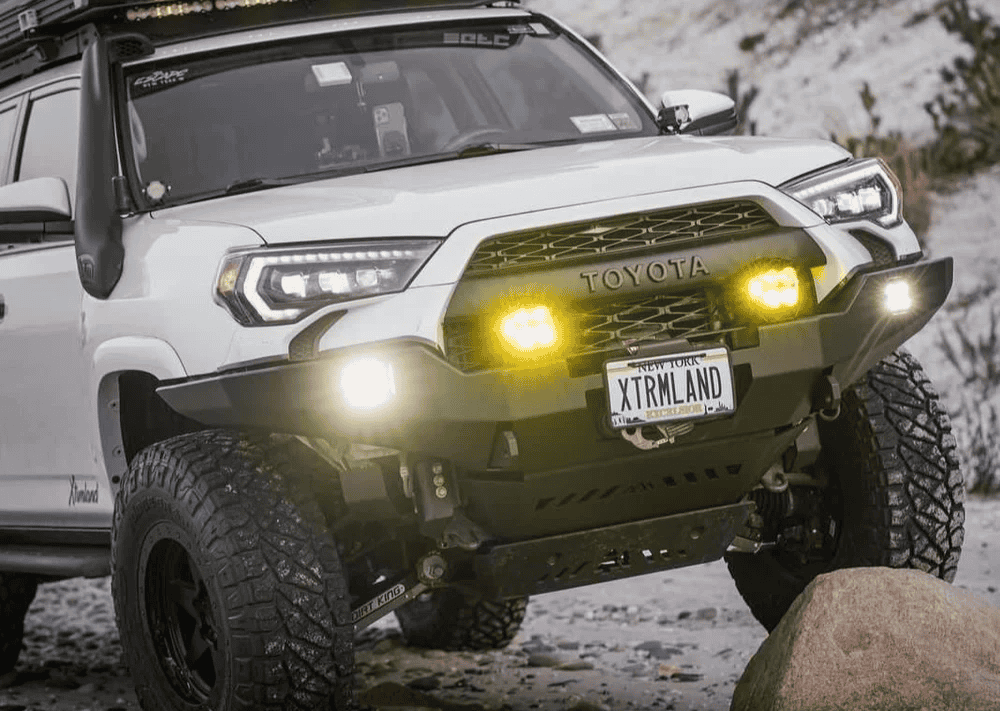Overland Vehicles

The Cybertruck changes how an overland platform is planned. Its stainless exterior panels, integrated vault, and adaptive suspension call for mounting solutions that respect the structure while keeping service access simple. A clean platform starts with load paths that distribute weight into robust locations and a layout that avoids binding the vault door or crowding the camera and sensor suite.
A practical approach treats the bed and roof as complementary zones. The bed carries dense items, water, recovery gear, and a compact galley, while the roof holds lighter, streamlined cargo. A low profile rack or crossbars that sit close to the roof reduce wind load, noise, and energy loss. Keep the center of gravity low, protect approach and departure angles, and preserve cooling airflow.
Weather management matters. The vault is a gift for dust and rain control, but it influences rack design and tent placement. Decide early if you want the vault to open under a rack, or if the rack spans above it with hinges or quick release mounts. Every choice should preserve daily usability, from grocery runs to gear reloads after a muddy trail day.
Start with weight accounting. Aim to keep heavy items forward and low in the bed. Drawer systems should tie into solid points, avoid flex, and run smooth when coated in silt. Side mounts can carry shovels, traction boards, and small fuel for tools. Plan for thermal expansion and dust control with seals and drain paths. A modular approach lets you add a tent, awning, or bike mounts without redesigning the entire system.
Several components define how a Cybertruck overland platform behaves off pavement. Tires tune the ride, grip, and rolling resistance. Choose an all terrain with a compound that resists chunking on rock yet rolls quiet on highway. Skid protection for critical zones lowers risk when navigating ledges or washouts. Lighting should add useful output without glare, with warm white or selective yellow options for fog and dust.
Recovery readiness is about more than a strap. Rated points, a compact kit with soft shackles, a shovel that fits your storage, and tools for plug and patch are part of the baseline. Communication can be as simple as dual band radio and a satellite messenger. Mount antennas where cable runs are short and out of harm’s way, and route wiring with service loops and proper strain relief.
Cabin comfort pays dividends on long days. A sleep setup that deploys fast encourages camp discipline. Keep cook gear in one reach zone, water at the edge, trash isolation strict, and lighting dimmable to preserve night vision. The best platform feels easy to live with in wind, rain, and dust.
Adaptive ride height helps clear ruts and rocks, but the plan should not rely on max height all day. Pick a tire size that fits comfortably with full suspension articulation and steering lock. Add skid protection where drag marks appear first, and keep fasteners accessible for trail repairs. Evaluate approach and departure with the rack, tent, and spare mounted to confirm nothing drags before the tires do.
EV overlanding rewards smart planning. Range changes with speed, temperature, grade, wind, and the mass and shape of your platform. A rooftop tent, tall awning, and open cargo can add aerodynamic penalty. The good news is that careful packing, low profile mounts, and strategic tire choice can keep efficiency in a comfortable zone. Learn your real world watt hour per mile with and without gear, then plan margins accordingly.
Charging strategy is part map, part weather, and part patience. Aim to arrive with a buffer that accounts for elevation and headwinds. On remote stretches, planning tools that factor elevation and temperature help keep surprises low. At camp, a balanced power plan for fridges, lights, and comms preserves traction battery charge. Shore power, portable solar for small loads, and disciplined lighting all help.
Thermal management matters for both batteries and occupants. Park for shade when possible, ventilate the cabin at night, and manage heat sources so the truck does not work harder than needed the next morning. Keep software updated for the latest navigation and charging improvements.
Use waypoints to build realistic legs between chargers near trailheads. Drive at a steady pace, avoid roof clutter, and close the vault when possible for better aero. Tire pressure should suit terrain but return to highway settings before long pavement stints. Route planning apps that respect EV variables can save hours and reduce stress.
A Cybertruck overland platform is more than parts. It is a system that combines structure, storage, comfort, and efficiency to support long days far from town. When the layout supports quick camp routines and protects range, the trip becomes about the route rather than the gear.
If you want a seasoned team to translate these concepts into a built rig, explore our overland rigs. For detailed planning and the right mix of storage, protection, lighting, and communications, see our custom overland upfit. Curious about process, craftsmanship, and support from build to handoff, here is why choose OZK Customs.
We design and build trail ready systems that honor efficiency, comfort, and safety. From racks and drawers to power distribution and lighting, our team delivers a cohesive platform and a calm handoff so you leave with confidence and a clear plan for your first route. Send a note with where you travel, what you carry, and how you camp, and we will outline a build that fits your timeline.
Ready to turn a concept into a capable rig? Our team designs and builds overland systems that match your routes, payload, and comfort goals. Share a few details about how you travel and we will map the build, timeline, and budget so you can pick up a dialed truck and head straight for the trail.
ADDRESS:
6159 E Huntsville Rd, Fayetteville, AR 72701
PHONE:
(479) 326-9200
EMAIL:
info@ozkvans.com